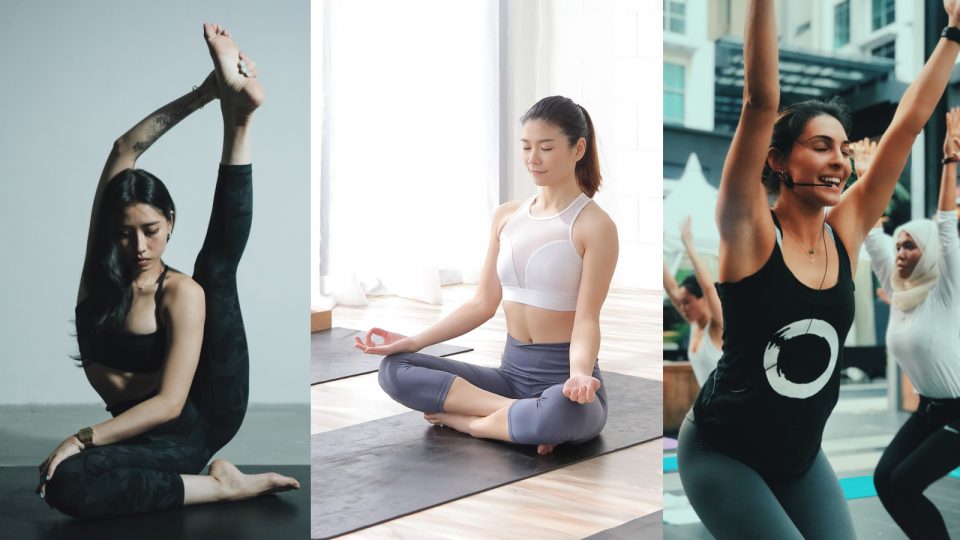Is your neck stiff? Or maybe your muscles are sore from an intense running workout? No worries, We got your back! From now on, you do not have to worry about your stubborn pain anymore.
We are excited to introduce you to the most avid yoga teachers in Malaysia who can guide you through step-by-step on how to loosen up your muscles in running.
Most importantly, you will have a moment to yourself to relax your mind, body and soul that you always wanted.
Why Do You Need a Yoga Teacher?
In your life, you will never realise that your yoga teacher has changed your life. This may sound insane, but in our sentiment we are sure of it.
Yoga teacher trainings should really be thought of as inward journeys. They will teach you the practical yoga skills like posture and proper body awareness to help you avoid injury, but what they have to offer goes so far beyond the physical, it’s incredible.
What is The Difference Between a Yoga Instructor and a Yoga Teacher?
As the name implies, a yoga instructor instructs, whereas a yoga teacher teaches. The difference lies in the focus that the yoga teacher or instructor gives to the students. Most of the time, yoga instructors use their time to practice themselves in classes.
You will find them on their yoga mat throughout the class, performing the asanas along with the students and instructing the alignments of the poses.
Nevertheless, a yoga teacher hardly spends time on his or her yoga mat while teaching.
The teacher may demonstrate a pose or two, but most of the time he or she will walk around during the class to observe the students, and to correct the poses and give modifications when necessary.
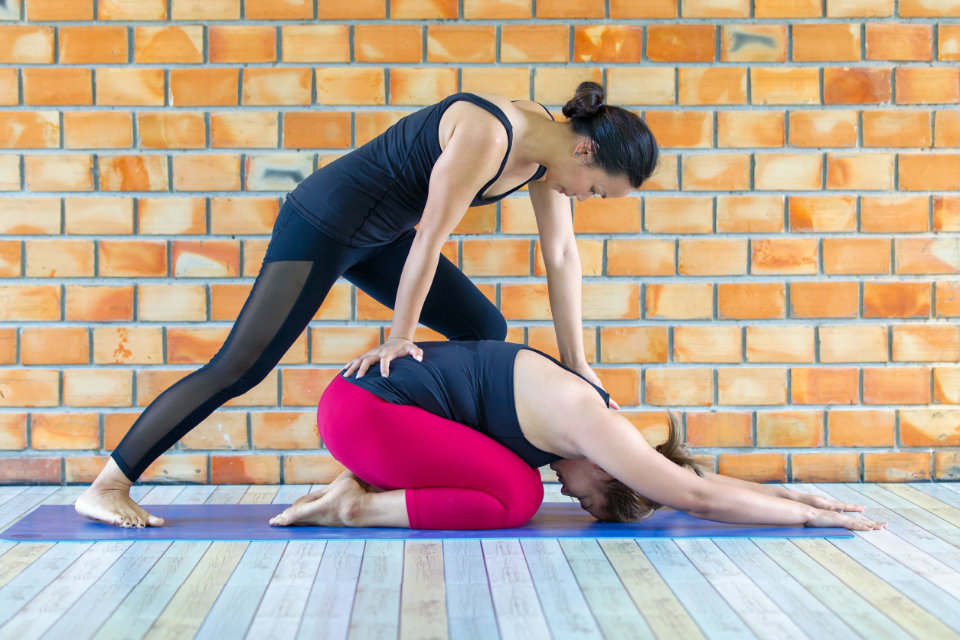
How to Become a Yoga Teacher?
If you are thinking to pursue in yoga teaching, then this section is the right one for you. You have a passion and love affair with yoga and is now recognising your passion towards yoga practise has started to develop beyond asana.
Now you must be wondering how are you going to take it to the next level? Below are the 4 steps on how to become a yoga instructor.
Step 1: Do Your Research
Style of yoga
Do try out different courses in various types of yoga such such as Ashtanga, Anusara, Hatha, Vinyasa, and Bikram Yoga. Take note and understand which styles works well for you.
In addition to that, pay attention to these differences types of yoga as the style of instruction may vary by facility and teacher.
You should find the type of training that suits you best. One bonus tip that is finding your own mentor.
A mentor can help aspiring teachers learn about various teaching techniques and styles of yoga. Not just that, mentor helps teachers decide which training program is most suitable.
Accreditation
There are four main yoga teacher associations to choose from, which are The British Wheel of Yoga, Yoga Alliance UK, Yoga Alliance International, and the Independent Yoga Network. Each association has its own criteria or offers different types of training.
Courses range from a minimum of 100 hours to 500 hours, over an intensive course of more than 2 years or more. Be practical and choose what’s best for you.
Step 2: Managing Your Finances
Transitioning from regular employment to become a self-employed, it is important to consider your finances. You have to know your market. Do a deep research and look into the competition among yoga teachers in areas around you.
You may consider a unique approach to differentiate yourself from other teachers.
Asking yourself with these questions might help you to manage your finances and how you want to approach your career as a Yoga instructor.
- Am I going to teach at yoga studios and/or start my own classes?
- What other costs should I look at if I’m setting up my own studio (insurance, room hire, marketing costs)?
Step 3: Get Registered
Students who complete programs that conform to the guidelines set out by the Yoga Alliance can apply for a registered yoga teacher (RYT) certificate.
Step 4: Earn Continuing Education Credits
Most of the yoga professionals attend workshops to keep their knowledge up to date. Teachers registered with the Yoga Alliance are required to must complete 75 hours of continuing education every three years.
This includes teaching yoga for 45 hours and attending 30 hours of additional classes. RYTs who meet in terms of experience and education requirements can pursue advanced qualifications.
Yoga vs Running
If you are debating whether yoga or running is best for you to lose weight or improve your overall health. Debate no more, the answer is both.
Both yoga and running have the benefits to improve your stamina, physical fitness and strength. But most importantly, which exercise feels best for you.
Reduce Stress
Jogging or running is known for working up a sweat and relaxes you in the long run. Both of the exercises help combat depression and wipe out anxiety.
On the other hand, yoga is a relaxing exercise and also a meditative moves. Yoga eases stress and you can practise your deep breathing exercise into your routine.
It might be contradictory, but yoga and running can help you to reduce stress either way.
Muscle Gains
Building muscle is one of the important aspect in any exercise routine. Strength training helps you to improve stamina and strength, and reduce your risk of injury.
Yoga and running can help you to can help you to build lean muscle. Incorporate weight lifting in both exercises is also a bonus to gain muscle and burn calories.
Flexibility
Yoga will definitely win this section. Stretching and bending is can make your body more flexible, whereas jogging can’t give you that.
So, include stretching in your running or jogging routine will increase your flexibility and prevent you from injury as well.
If you are a beginner to yoga, we recommend you to do an easy stretching to build up your flexibility instead of jump right into a challenging pose to avoid injury.
Gradually, you can start to do an easy yoga poses to improve your flexibility in your body.
Yoga Plus Running
In a nutshell, Yoga and running is a good combination together as both of them have the advantages to help you to excel better in your fitness regime. But whether it’s running or yoga, you will need to be doing it correctly.
Fortunately, we are able to get you the exclusive tips from some of the most avid and talented yoga coaches in Malaysia.
For all runners out there, this article is a must to read if you want to improve your fitness regime.
1. Yoga Instructor: Kylie Denis
Originally from Ottawa, Canada. 28 years-old, Kylie Denis is a Yoga Teacher and Studio Owner who is currently living in Kuala Lumpur, Malaysia.
Denis has coached since 2016, where she owns a boutique yoga studio called Omology Yoga.
To teach yoga is Denis passion as personally she witnessed the transformative power of a yoga practice, physically and mentally. Denis loves sharing a practice that her students can apply on and off the mat.
I like to empower my students to explore and when necessary, modify or deepen a posture if a different variation feels better for their body.

Before we get into Yin practice with Denis, let’s get to know why Denis ensure her students enjoy their classes before they walk out of a training session.
RS: What types of yoga do you have the most experience instructing?
Denis: Hatha Vinyasa and Yin are the one I am instructing the most. I was trained in both of these styles and practiced them for many years before. Naturally, they became the classes I was drawn to teaching.
RS: How do you develop genuine connections with your students?
Denis: I always try to engage with my students before and after class. I learn their names, their goals, where they are in their practice. I encourage my students to ask questions. My classes are very interactive in that way.
RS: In your view, why incorporate yoga practises are a good benefit for runners?
Denis: Yoga is a great practice for strengthening and stabilising the lower-body muscles we use to run. It is also a useful recovery practice to release these muscles as well as the ligaments/tendons that are tense after a run.
RS: Which type of yoga poses or stretches is suitable for runners (before and after a run)?
Denis: Before running, I like a simple twist, especially for the upper body to encourage it to remain relaxed during the run, so that it can prevent cramps. Right after running, 1/2 splits for tight calf muscles or hamstrings and “reverse figure 4 squat” to release the gates.
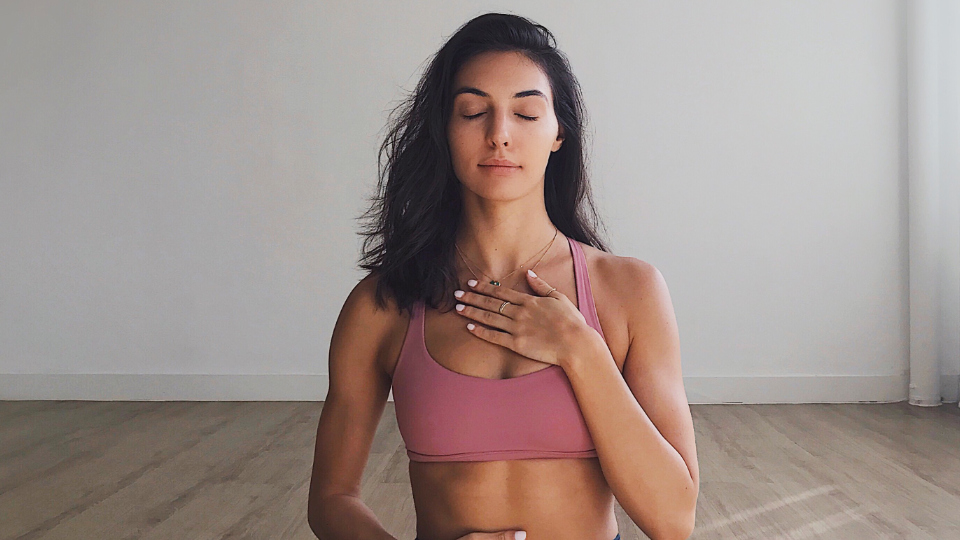
RS: What are some of the challenges you have overcome as a yoga teacher?
Denis: Lack of inspiration is a big one. When this happens, I know I’m not taking enough time for my own practice. That usually means it’s time for me to attend a new training to update my skills and get re-inspired.
RS: Can you share an effective method you have used to ensure that students perform skills effectively?
Denis: Teaching student body awareness. It’s one thing to instruct the alignment for a poster, but ultimately every body is different. What feels good for one person, might not for another. I like to empower my students to explore and, when necessary, modify or deepen a posture if a different variation feels better for their body.
RS: If runners who have no experience in yoga, what advice can you give to help them prevent from injuries during running?
Denis: Keep your movements light and low impact – your knees will thank you.
You can contact Kylie Denis here.
2. Yoga Instructor: Aaron Wickramasekera
Aaron Wickramasekera is a registered yoga teacher, personal trainer and a body transformation coach. Born and raised in Sri Lanka, 29 years-old Wickramasekera has coached yoga for almost 2 years.
Wickramasekera offers a deep knowledge from his diverse studies, including yoga, personal fitness coaching and professional Muay Thai kickboxing. Now, he travels around the world teaching in countries such as France, Mexico, Bali, Malaysia, Sri Lanka and Thailand conducting yoga teacher training in collaboration with Annie Au.
As a teacher, Wickramasekera’s goal is to help people to understand the values, the potential growth and experience it by building a daily yoga practice both on the mat and off.
Wickramasekera passionate to teach Yoga because he wants impact and improve as many lives as he can in a ways that yoga has improved his.
Learn to understand your body, develop and build a good nutritional foundation.
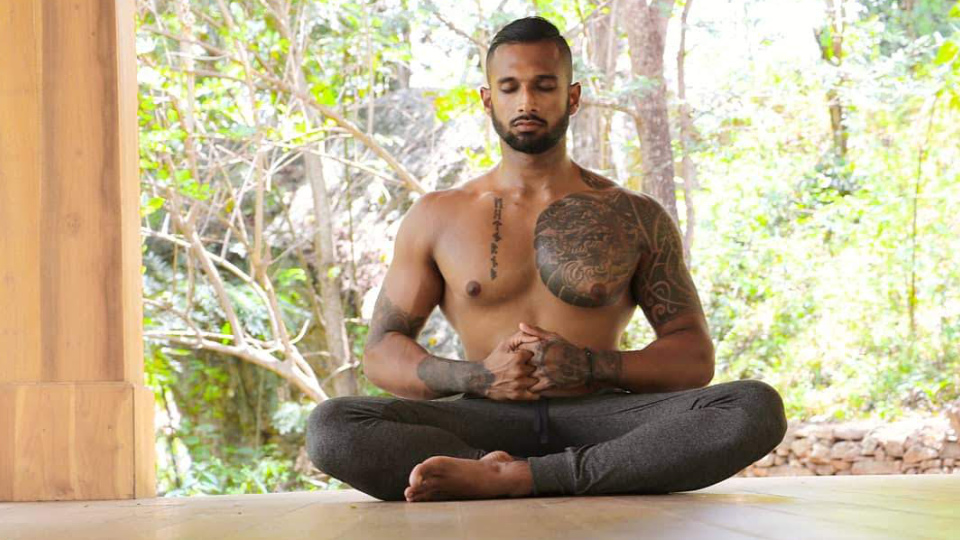
Breathe in-and-out. Let’s discover how yoga improves Wickramasekera’s daily life.
RS: What types of yoga do you teach?
Wickramasekera: Vinyasa Yoga and Yin Yoga. Vinyasa Yoga in my opinion is accessible to almost everyone and it is very easy to progress in and to have fun with (most importantly) & Yin Yoga due to it reshaping and reforming muscle facia which improves in flexibility and mobility to say the least.
RS: How do you build a strong connection with your students?
Wickramasekera: In my opinion, in order to have and build genuine connections with students, you will need to look at each of them individually. Also, to understand that each of them is different.
A yoga teacher should have the knowledge in terms of anatomy, philosophy, asana, emotional and physical edges in order to help the needs of your students.
RS: Why incorporate yoga practises is advantageous for runners?
Wickramasekera: Incorporating a good yoga practice for runners is essential. As a runner myself, I always used to suffer from tight Achilles tendons, calves, hamstrings, hip flexors and gluts, which often lead to back pains and shoulder pains.
This is because to the over compensation in other muscles along the superficial muscle lines that run along your body. Having a good yoga practice will help with all these issues if is done correctly.
Also incorporating the breathing techniques of yoga is very helpful for runners to build stamina and endurance.
RS: What kind of yoga poses or stretches is suitable for runners?
Wickramasekera: This is a very tricky question due to everyone being different as I mentioned before.
For example, if someone was very flexible doing a lot of static stretch before running, it would be detrimental, but if someone was relatively inflexible doing Yin Yoga or static stretching before would help them utilise their muscles more effectively.
I would recommend some of the Yin Yoga poses, such as half butterfly, full butterfly, caterpillar, reclining twist, sleeping swan and etc.
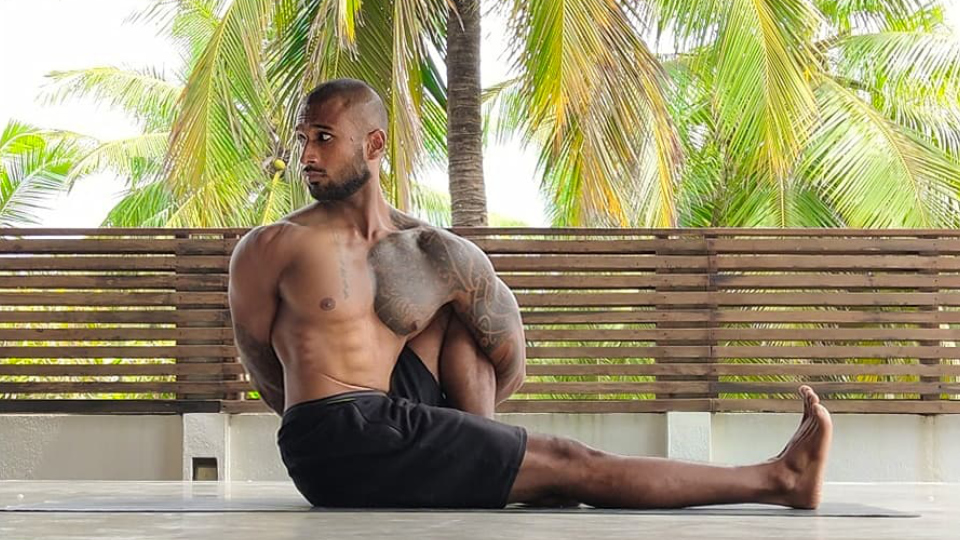
RS: What are the obstacles you have experienced as a yoga teacher?
Wickramasekera: The biggest challenge as a yoga teacher is learning how to communicate and connect with your students. It will make my teaching more adaptable and accessible for them.
Additionally, one of the biggest challenges is overcoming and shedding light on the misconceptions of yoga such as certain philosophies, diets and etc.
RS: What’s an effective method you have used to ensure that students perform their skills effectively?
Wickramasekera: The most effective method to ensure that students practice effectively and safely, is to ensure that they learn from teachers who have a diverse knowledge in yoga and as well as anatomy, skeletal differences and how the human body works in general.
RS: For runners who have no experience in yoga, how can they prevent injuries during running?
Wickramasekera: The best advice I can offer is to develop a good mobility and flexibility routine.
Learn to understand your body, develop and build a good nutritional foundation. Educate yourself on human anatomy and learn to listen to what your body is telling you when it is tired, overworked and etc. These are the best ways to prevent any kind of injuries.
You can contact Wickramasekera here.
3. Yoga Instructor: Shinyee Lim
An ex-cheerleader in past school days, 27 years-old Shinyee Lim is a yoga and a Pilates instructor. Lim has been coaching since 2016. In Lim’s past school days, she discovered yoga in the form of DVDs. Having graduated from college, Lim landed a job in advertising.
Fast forward a couple of years, Lim left her job to pursue teaching yoga, which she is passionate about. There are many industries to go into but Shinyee chose yoga because this is what she feel people need more of.
In her everyday life, she will not forget to remind herself to just keep moving, breathing and being kinder to yourself.
Movement is my medicine. Put movement together with breath and mindfulness, you almost can’t go wrong with that.
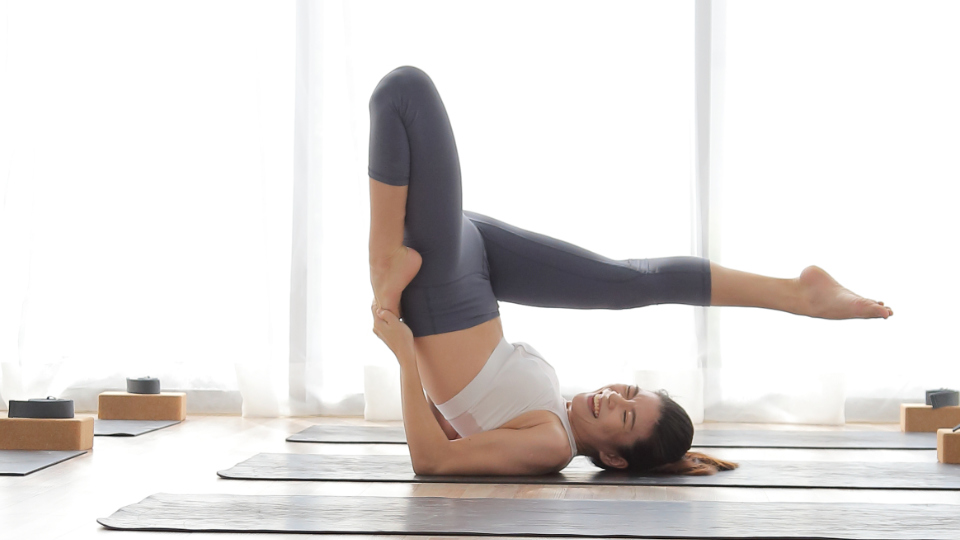
Be kind to yourself and breathe. we are sure you will have tons of fun in Shinyee’s classes.
RS: What kind of yoga do you have the most experience instructing?
Shinyee: I’m in my best element when I’m instructing a sweaty dynamic class that flows with the music. Have fun, discover something about yourself, and see the lighter side of things.
RS: How you create genuine connections with your students?
Shinyee: Through listening and understanding their needs. I love giving people space and I don’t insist too much on having things my way. When people come to practice, it is for themselves and not for me.
I’m here to guide, to help you get connected with and understand yourself just a little more. I’m not here to solve your problems in life, but I’m holding this safe space for you to deal with your stuff.
RS: Are combining yoga practises beneficial for runners?
Shinyee: In some ways, yoga is similar to running. They both require breath work, endurance, and determination. Yoga complements running when some yoga poses or stretches are used before or after a running session to speed up recovery, and reduce injuries.
Moderation is key. If you’re running 3 times a week, try practicing yoga twice a week to bring the balance in!
RS: Which type of yoga poses or stretches is recommended to improve running?
Shinyee: Stretches that target the hips, calves, hamstrings, quads, and ankles. Try yoga poses like the pyramid pose, pigeon pose, and low Lunge.
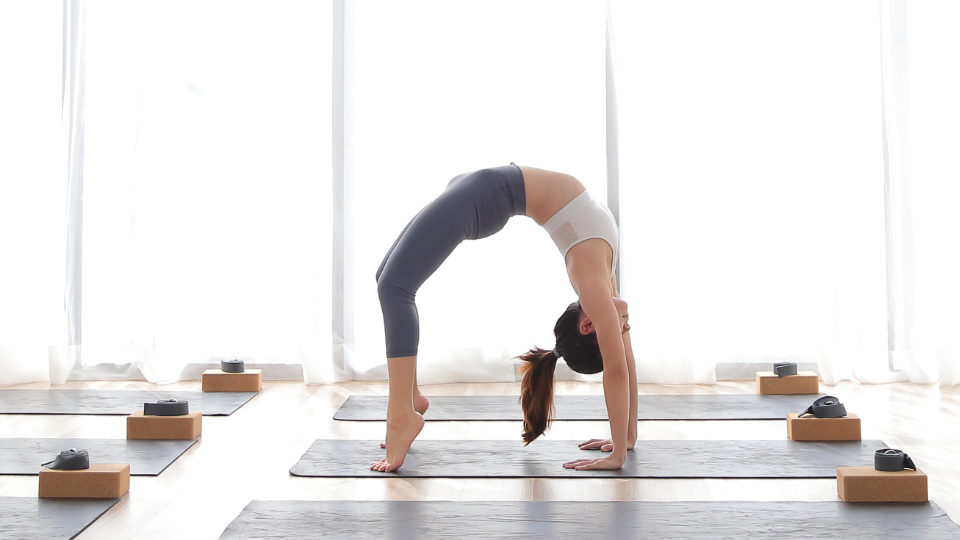
RS: How do you overcome the difficulties as a yoga teacher?
Shinyee: Self-doubt. When “teaching” something to a class of people, sometimes I just can’t help but to get the “what am I even doing?” or “am I worthy enough to do this?” narratives in my mind.
What helps is when I remind myself the reason I started, what my intentions are, and to be very honest with who you are.
RS: What’s an effective approach you have used to ensure that students perform skills effectively?
Shinyee: Cut the fluff, be clear and concise. Understanding how the other person learns is also key, as we all pick up things differently.
RS: For runners who is new to yoga, how can they prevent running injuries with yoga?
Shinyee: First, mobilise the joints through actions like circling the wrists, ankles, hips, and etc. Start slow, perhaps with a brisk walk, to get the heart rate up and body warm. After the run, cool down again with walks and stretch the muscles, especially those in the hips and legs.
Listening to your body is applicable during yoga, as well as running and everything else. Your body is intelligent and will send signals to you accordingly, you just have to pay close attention.
Be mindful and fully present during your activities, listen to physical and physiological feedback. When something is causing you too much pain or suffering, it’s probably not right.
You can contact Shinyee here.
4. Yoga Instructor: Olya Kudryavtseva
33 years-old Olya Kudryavtseva has been a fitness professional since 2009. Kudryavtseva got into yoga coaching because of her love for movement. Since young, Kudryavtseva was an active child, she was a dancer for many years and stayed in sports for her entire life.
Slowly, Kudryavtseva grow a fond of this habit. Once Kudryavtseva had an opportunity to stop her corporate career, soon she had the time to learn how to teach people to be healthy on a more professional level.
Yoga is a passion of Kudryavtseva as she needed an outlet at one point of her life, to have some space to think, contemplate and just be with her thoughts. Yoga is the one to offer her that.
During that time, Kudryavtseva was also a running coach. Runners who had taught by her also requested yoga classes from her. So, Kudryavtseva started to offer some classes. Then, Kudryavtseva started travelling to India and study with her teacher. From there, her interest grew deeper as well as to understands of how much this practice has to offer.
Yoga can get your thoughts straight. Elevate your mood as well as relieve stress.

Going through a tough week? Let’s go for a power flow class with Kudryavtseva to clear your mind out.
RS: What types of yoga is your specialty?
Kudryavtseva: Ashtanga and power flow. I began my journey with traditional Ashtanga Mysore practice, because it gives freedom to all bodies, all ages and abilities as it’s not a guided class, but rather a personal experience with the teacher who is in a room.
Today, I mostly teach power flow as this is what most commercial gyms are looking for. But my heart stays with the traditional practice.
RS: How do you develop connections with your students?
Kudryavtseva: I guess you have to be genuine to have a genuine connection. I try to be kind and smile. I can have a rough morning, but I never bring my bad mood to my class.
I try my best to give personal attention and care to every student, see where they are coming from in terms of their previous experiences, injuries and exercise history. I do care whom I teach. So I am interested in everything.
If they want to share about their day, work or family – I am all ears! The connection builds over time. It is a natural process.
RS: Do you think yoga exercises are useful for runners?
Kudryavtseva: It’s obvious that stretching is good for you. But yoga is not only about that. It can get your thoughts straight. Elevate your mood as well as relieve stress. It is also a great cross training activity for runners.
It is essential to complement running with strength exercises and yoga is a low impact option. Look for power flow or vinyasa classes if you want more strength. Hatha, if you need a slower movement and Yin, if you want to stretch.
RS: Which type of yoga poses do you recommend to runners?
Kudryavtseva: There are so many! You have to go to the class as the entire flow matters! But as a stand alone, give a try of these yoga poses.
- Pigeon pose – stretches the gluts
- Hero pose – stretches the quads
- Downward dog – relieve back, calves and shoulders
- Camel pose – relieve chest, quads, and shoulders

RS: What are some of the issues you have experienced as a yoga teacher?
Kudryavtseva: Usually, people come to a class and are intimidated by the unknown. They don’t know what to expect and think they might not be able to do it. Well, nothing wrong with that. You probably took some time to build the mileage to be a confident runner.
Same goes to yoga. You will need some time to get used to the movements. Some movements will be challenging for you, some you will feel amazing. It is important to let your teacher know that you are doing yoga for the first time.
So, you can get some help with easier variations or you may need props if necessary. Give yoga a try for a few times. Don’t give up after the first class. There are so many different classes and schools of yoga. I am sure there will be one that suits you out there!
RS: Can you share an effective method you have used to ensure that students perform their skills effectively?
Kudryavtseva: There are a few types of yoga learners. Some learn and understand through sound, some learn through visual and some need a hand to help out with the posture. I offer all of these in my classes.
I am always busy walking around, talking and correcting where there is necessary. As well as keep silent and let them understand their own bodies and feelings. It’s alright to make mistakes.
I will be in the class to make sure you are not hurting yourself, but whether you have straight legs in your downward dog or not it doesn’t matter really.
A lot of things will come later with practice. I like to give space and time for students to connect to their breath as well as a guide through the movement. It’s really all about balance!
RS: What advice would you give to runners to help them prevent from injuries?
Kudryavtseva: Stretch longer! Check your running techniques with a running coach, and do a cross training at least once a week.
You can contact Kudryavtseva here.
5. Yoga Instructor: Lim Lay Gaik
56 year-old Lim Lay Gaik has coached yoga since 2005 with 20 years experience. Lim’s life changed for the better ever since she started practicing yoga.
For more than a decade, Lim was crippled by migraine attacks. Even though Lim was a fairly active person and relatively healthy, the frequent attacks would leave her nauseous and unwell. Yoga was recommended to Lim as a possible cure.
After practicing for a few months, Lim noticed that her migraine attacks became lesser and lesser and eventually, almost non-existent. From then onwards, Lim went from being just a practitioner to becoming a yoga teacher so that she can help propagate and spread the enormous benefits of yoga.
You don’t have to be flexible to do yoga. You do yoga to be flexible.
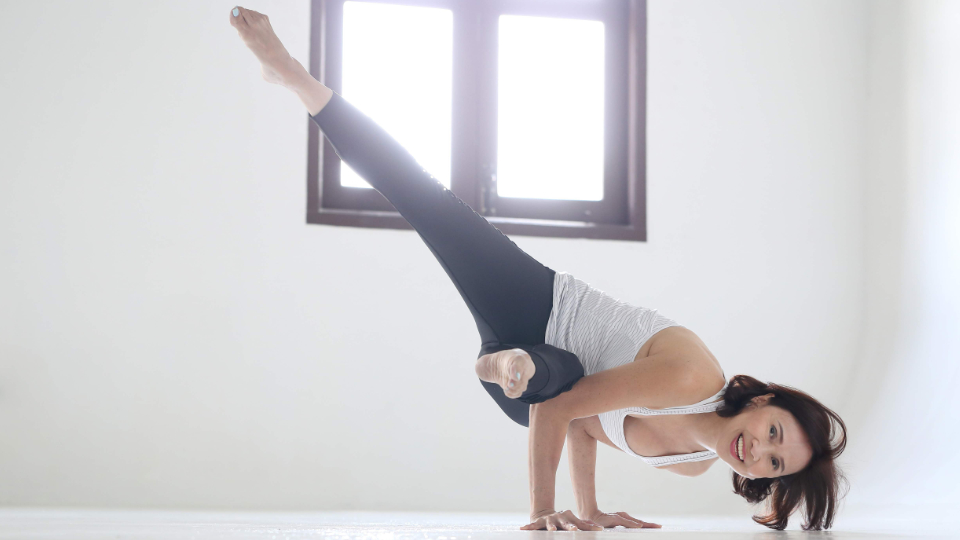
Having a severe headache often? We are sure Lim can help you to solve this problem.
RS: What types of yoga do you teach?
Lim: There are many schools and styles of yoga. I teach mainly Hatha Yoga. Hatha is derived from the Sanskrit word “ha” which means “sun” and “tha” meaning “moon”.
Hatha Yoga practice encompasses physical alignment and breath control to unite the active body and the busy mind thereby achieving balance and overall wellbeing.
RS: How do you connect with your students?
Lim: Through teaching yoga, my students are now my friends. Perhaps, I make it a point to keep in touch with them, finding out their progress and stay connected with them on a regular basis.
As a yoga teacher, it does not necessary mean that you are better than your students because, often enough I find that I can learn from them too. Maintaining a good rapport with my students ensures that we support each other.
RS: Can runners benefit from Yoga?
Lim: Yoga can provide amazing benefits for runners. By incorporating regular yoga practice into your running routine, generally you can build your core strength, which is essential for all athletes.
Other benefits such as building muscle strength in the hamstring, quads and hip flexors can help to reduce injuries. In yoga, you need to hold asanas (yoga poses) for an extended period, which helps to create “space” and loosen up the muscles.
Proper breathing technique is an important aspect of enhancing physical activity. Likewise, yoga teaches deep breathing techniques, which can enhance a runner’s performance, whether running a marathon or sprinting.
Yoga can also help with mitigating back problems which many runners do face.
RS: Which yoga poses or stretches are best for runners?
Lim: My recommendations based on my experience are the following:
- Downward Dog – stretches the hamstrings, calf muscles and strengthens the shoulders
- Lunges – stretches the hip flexors and quadriceps
- Pigeon – opens up the deep muscles of the hips and hip flexors
- Half Split (Runners Stretch) – stretches the thigh and groin muscles, releasing any post tightness and tensions
- Lizard Pose – stretches the hips, hamstrings and quadriceps
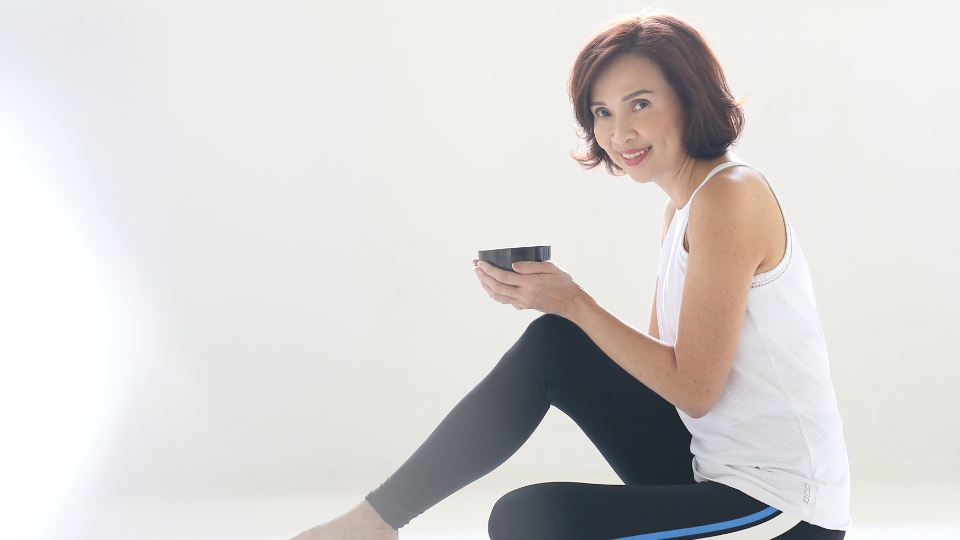
RS: Why do you think some people fear trying yoga?
Lim: Many a time, people will say “I can’t do yoga because I am not flexible”. My answer to this is, you don’t have to be flexible to do yoga. You do yoga to be flexible. How many of us are born flexible?
For me, yoga is an excellent all-in-one workout for our body, mind and soul. You can adapt your practice to suit your individual level of fitness and mental state of mind. All you need is a yoga mat.
RS: What’s an effective method yoga learner can perform their skills effectively?
Lim: Listen to your body first before listening to anyone else and that includes your yoga teacher. Why? Because no two bodies are the same.
What the teacher wants you to do may not be accessible to you and you may be experiencing pain or discomfort, which the teacher may not know or feel. So, always listen to your body and understand your own needs and capability.
RS: Can you provide some advice to help runners who want to use yoga to improve their performance?
Lim: I would recommend that they start (warm up) and end (warm down) their running activity with some light stretches performing the poses as suggested previously.
Once your muscles are warmed up, the risk of injury is lessened, and conversely, during warming down the muscles get a chance to recover and normalised.
You can contact Lay Gaik here.
6. Yoga Instructor: Sandra Woo
Sandra Woo started off as a yoga practitioner of 3 years before she was encouraged to take her YTT200 (Yoga Teacher Training 200 hours) by her Guruji. 28 year-old, Sandra Woo has grown into a multi-disciplinarian and she has extended her practice and studies into mobility and functional range movement of the human body.
Sandra explores all things recovery, strengthening and conditioning in various different disciplines in her own time. On top of that, Sandra has coached since 2016.
Yoga is one of those disciplines that extend into every facet of life as a human being. This is what Sandra is passion about.
Especially in this day and age where stimulants abound mentally, physically and emotionally, yoga is one of the practices that isn’t just great for physical maintenance, but also deeply rooted in philosophy and an understanding of the environment and how we relate to it that helps regulate oneself in regards to mental and emotional wellbeing.
Self-awareness and honesty in observation are an important value in being human, one that she believes we should always be in touch with.
I observe, I value patience, I hold space, listen and most importantly, I trust my students to learn and do their best.
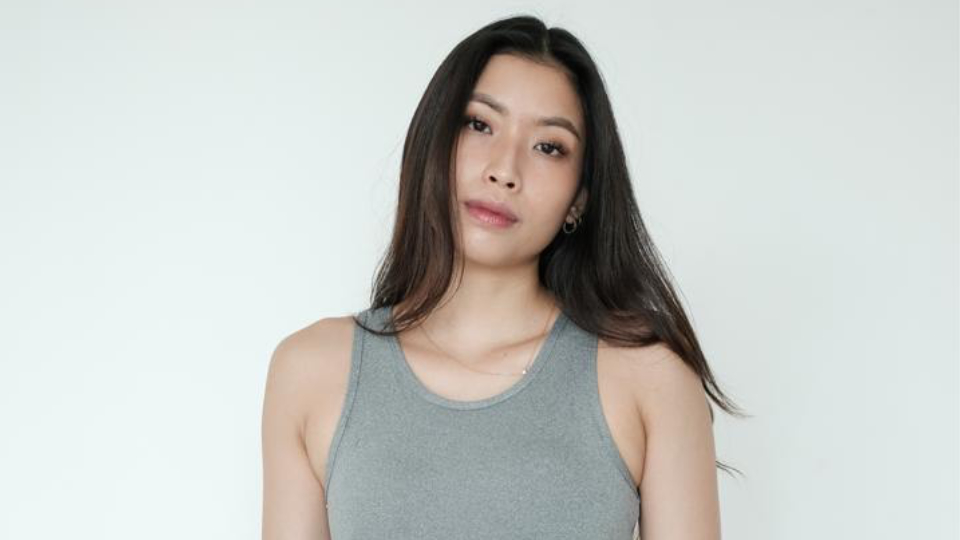
Going back to basics and learn to connect with your body. Woo is here to teach you how yoga helps stimulates our mental and emotional wellbeing.
RS: What types of yoga do you teach?
Sandra: I have a special love for teaching fundamental movements and how the basics build up into healthier access to more challenging postures.
I’d like to say I teach yoga in general, depending on the people in class and what they need at any given time, but if I had to put it in words, just raw, real, fun, self-exploratory yoga.
The class type is simply a vehicle, on the journey to receiving wisdom and self-acceptance.
RS: How do you build relationships with your students?
Sandra: I observe, I value patience, I hold space, listen and most importantly, I trust them to learn and do their best. Students are given autonomy over how they want to experience their learning process in a safe space.
RS: Can yoga practises be helpful to runners?
Sandra: Running in general is high impact on the lower body, so in a physical context, yoga postures are great for building joint and core strength to ensure that the body is well supported especially for long distances.
In addition to that, the mindful practice of yoga assists the mind in finding endurance and maintaining awareness. A steady breath encourages a steady pace.
RS: Which type of yoga poses are suitable for runners?
Sandra: Dynamic stretches are still my favourite type of exercise for warm-ups, in particular low lunges and runners lunges. Anjaneyasana to half-hanuman, if you will.
A few rounds of sun-salutations should suffice as a warm-up, and for cool downs I love how forward folds, half-pigeon, baddha konasana and supine twists create space for recovery. Simple and effective.
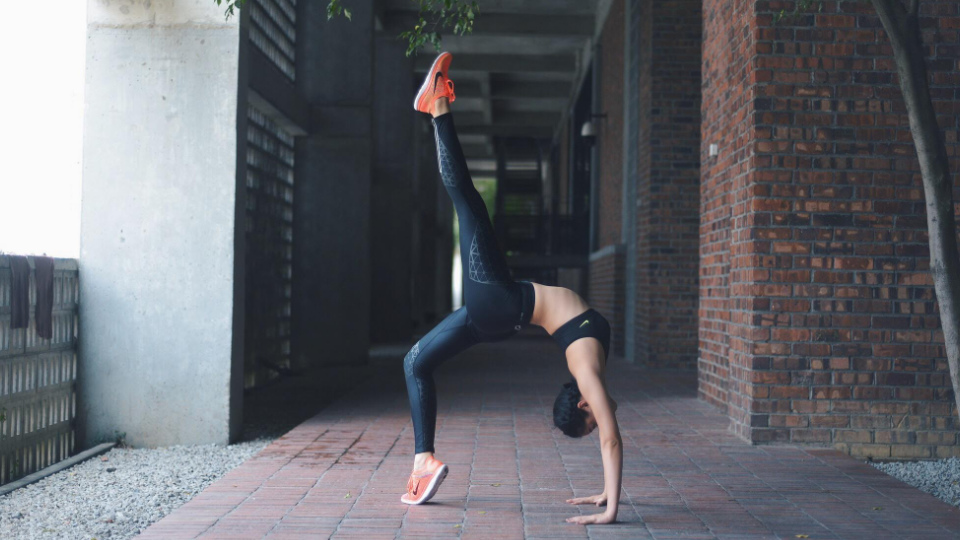
RS: Is there any challenge in teaching yoga?
Sandra: Keeping classes consistently interesting, educational and safe for students. I find that it has become a trend for a yoga class to be filled with flows and non-stop movement that may not be very intuitive for the body.
Without a safe progression of preparatory postures, we shouldn’t be putting anyone into a challenging peak pose too soon just to keep a class interesting.
Finding the balance between these factors and still giving students valuable content to take away at the end of the class is something that I strive to do consistently, and it changes every class depending on who shows up.
I just stay adaptable and communicative, focusing more on what the students need than what I think I want to teach every class.
RS: What’s an effective method to improve yoga?
Sandra: I find that going through basic mobility movements are really important in getting students to understand how their bodies work. I explain and allow them to explore the different planes of movement as well as demonstrate drills that allow them to find their range of movement, so that they understand how far in a posture they should push and when they should stop in an effort to listen to the body.
The more they understand the break down of a movement in a posture, the better they approach it in ways that is suitable for their individual self, and not according to how a posture would look like on a seasoned practitioner or a yoga teacher.
RS: How can runners prevent injuries with yoga?
Sandra: Injury prevention isn’t my favourite term to use, because anything can happen really in any kind of exercise.
What is important to me is that people make the effort to introduce and consistently maintain a variety of movement patterns so the body learns to move intuitively and stays fluid and well supported through any activity.
Variation, and consistency in efforts is the real key!
You can contact Sandra here.
We are thankful to all the yoga teachers who had shared their teaching skills and valuable tips to us. If you know any talented yoga teacher, do let us know in the comment!
More About Top Yoga Teachers in Malaysia
What is a yoga teacher called?
You can call a yoga teacher, Yogi, Guru jee, Swami and Aacharya.
How much does a yoga instructor make a year?
The average yoga instructor annual salary in Malaysia is about RM74k or an equivalent hourly rate of RM36. A yoga instructor with more than 8 years of experience can earn an average salary of more than RM91k. A yoga instructor with 1 -3 years of experience earns an average salary of RM55k.
Can I teach yoga without certification?
A yoga teacher must graduate from an intensive program to teach yoga to the general public. Legally, you do not need a 200-Hour RYT certificate to teach a yoga class, although many yoga studios require their instructors to have one as yoga teacher certification is important.
Why should runners do yoga?
Yoga can help runners to prevent injuries as it can develop strength in the core, quads, hamstrings and hip flexors. Yoga can improve running performance by strengthening underused muscles and key supporting muscles used in running.



